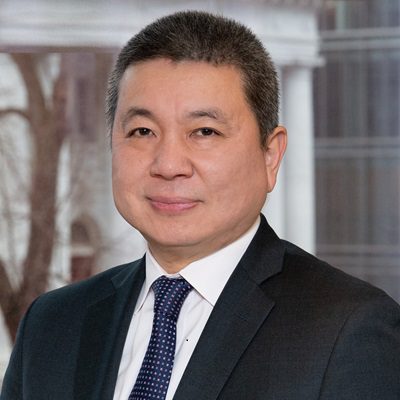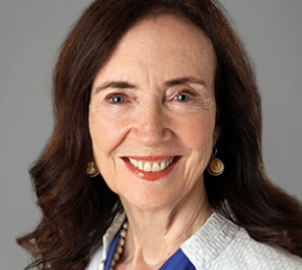- Revenue Cycle Management
- COVID-19
- Reimbursement
- Diabetes Awareness Month
- Risk Management
- Patient Retention
- Staffing
- Medical Economics® 100th Anniversary
- Coding and documentation
- Business of Endocrinology
- Telehealth
- Physicians Financial News
- Cybersecurity
- Cardiovascular Clinical Consult
- Locum Tenens, brought to you by LocumLife®
- Weight Management
- Business of Women's Health
- Practice Efficiency
- Finance and Wealth
- EHRs
- Remote Patient Monitoring
- Sponsored Webinars
- Medical Technology
- Billing and collections
- Acute Pain Management
- Exclusive Content
- Value-based Care
- Business of Pediatrics
- Concierge Medicine 2.0 by Castle Connolly Private Health Partners
- Practice Growth
- Concierge Medicine
- Business of Cardiology
- Implementing the Topcon Ocular Telehealth Platform
- Malpractice
- Influenza
- Sexual Health
- Chronic Conditions
- Technology
- Legal and Policy
- Money
- Opinion
- Vaccines
- Practice Management
- Patient Relations
- Careers
‘Primary care is in crisis’ – follow the money, or lack of it
Three experts talk about financial ramifications for physicians and the primary care workforce across the United States.
© tomertu - stock.adobe.com

Primary care has a money problem: high entry cost through medical school tuition, but lower salaries for physicians and lower spending nationally on it.
Meanwhile, physicians must follow their passion in medicine, and it would help if more of them were passionate about primary care.
On Feb. 28, the Milbank Memorial Fund, The Physicians Foundation, and the Robert Graham Center of the American Academy of Family Physicians unveiled “The Health of US Primary Care: 2024 Scorecard Report – No One Can See You Now.” It was the second annual report on the state of primary care nationally.
The online presentation included a panel discussion with lead author Yalda Jabbarpour, MD, director of the Robert Graham Center; Margaret Flinter, PhD, APRN, vice president and clinical director of Community Health Center Inc./Moses/Weitzman Health System; Kyu Rhee, MD, MPP, president and CEO of the National Association of Community Health Centers; and Frances Stead Sellers of The Washington Post.
This transcript has been edited for length and clarity.
Frances Stead Sellers: What percentage of health care spending should go to primary care? We know it's too low, right? In your view, what is the optimal primary care spend?
Yalda Jabbarpour, MD
© AAFP - The Robert Graham Center

Yalda Jabbarpour, MD: I think this is the question of the hour. I think I always answer this by saying, more. What is the optimal number? I don't know that we've studied the optimal number, but we know just based on other countries who have higher life expectancy, do better in health care indicators that like I said, it's about double what we're spending in the U.S. You know, I don't know that we've done studies yet in the U.S. that show what the optimal number is for the United States but more, definitely more.
Kyu Rhee, MD, MPP
© National Association of Community Health Centers

Kyu Rhee, MD, MPP: I'll say a quarter. It shouldn't be a nickel. If you think about value-based care, the movement towards value-based care, who are you going to trust to reduce hospitalizations, ER visits and prevent the progression of these chronic diseases that are going to double in terms of their burden over the next 10 to 20 years? Primary care clinicians and primary care teams so give us a core and will keep the health care costs down advance health equity, and do the job.
Frances Stead Sellers: There has been a lot of recent attention to philanthropic gifts covering tuition at medical schools. Has there been any evidence that there is an association between tuition coverage and entering into primary care?
Kyu Rhee, MD, MPP: I'll just highlight like when I, as an immigrant coming to this country, we weren't poor, but we were middle class. You know, I had, you know, pressures to think about, taking care of my family or taking care of my generation as the eldest son of my generation. So, the fact that I was able to get a National Health Service Corps Scholarship to be able to pay for my tuition was extremely important for me and that decision to go into primary care. So, I applaud things like you know, recently there was a large donation to Albert Einstein (College of Medicine). I don't know if it’s been studied, I feel like Dr. Yalba Jabbarpour would be able to probably answer this, but I do think the fact that a lot of becoming a physician, as I experienced, is deferred gratification. You do all this, med school, then you do residency, are paid poorly, and then you get out of there and if there's ways to get rid of that tuition, that extreme high cost – some of them are like $70,000, $80,000 a year – that likely you'll have people from communities that are underrepresented and to serve and probably choose primary care, and that focus on relationships is so essential.
Frances Stead Sellers: What are the primary reasons why trained individuals ultimately decide not to choose primary care? Is this a matter of financing or pay, prestige, lack of recruitment, et cetera? What is it about hospitalists or specialty care that is drawing people away from choosing primary care?
Margaret Flinter, PhD, APRN
© Moses/Weitzman Health System

Margaret Flinter, PhD, APRN: Well, that's a million-dollar question. It ties back a little bit to what Kyu was just saying about the cost of financing your education. If it leaves you saddled with tremendous debt, you already have a driver towards the highest area of renumeration. That's why I think philanthropy is great. But I’m really concerned that we have federal policy that makes that funding available, so that people do not choose their specialty area based on how much they're going to be able to pay their student loans off. And I like Dr. Rhee was a National Health Service Corps scholar, so big champion of that ,a program that most Americans outside of health care, don't even know about it. But I think that there are other drivers. I think the first and most important thing is people need to follow their passion. I don't want somebody in primary care that's really passionate about orthopedic surgery. I want them as a colleague, I want them as a collaborator, as a specialist destination, but I want people to do what they are passionate about and not everybody wants that intensity of a primary care relationship and continuity over time. But the challenge is if we can't compete in primary care at a reasonable level, for the people that we're asking to do the work, we will always lose. People have the same responsibilities, right? No matter what specialty they're in, they have responsibilities to their family, they have their obligations, they have their aspirations, and we need to make sure that primary care is funded so that we aren't setting ourselves up as we do today. If you look at the curve, highest paying specialties, lowest paying specialties, the primary care disciplines are down at the bottom. So I think that that is a real concern. And I again want to emphasize this is as true for the medical assistant who may be looking at having to take out loans but pay them back on the salary of a medical assistant. It’s true for everybody else on the team and that's why I think it's a national policy discussion, augmented by philanthropy. Always welcome philanthropy’s engagement, but it needs to be durational. And right now, we're waiting for the teaching health center appropriations to be reauthorized. We're waiting for the HRSA Bureau of Health Workforce to get their reappropriation so they can finish or continue to fund the postgraduate residencies and fellowships that they've started. This idea that money comes and then money goes is not the way to build a truly sustainable system for the future.
